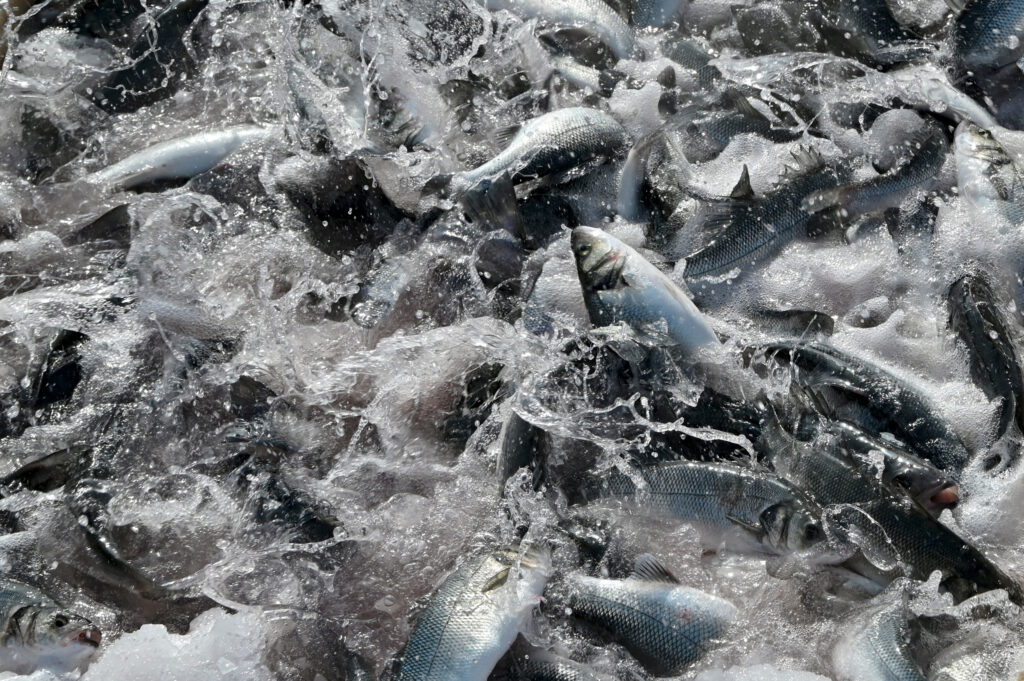Japan’s new “samurai jellyfish” is simply stunning – ScienceDaily

Report on the Discovery of Physalia mikazuki and its Implications for Sustainable Development Goals
1.0 Introduction and Summary of Findings
A research team from Tohoku University has formally identified and described a new species of Physalia, named Physalia mikazuki, in the waters of northeastern Japan. This discovery, detailed in a study published on October 30, 2025, in Frontiers in Marine Science, provides critical evidence of shifting marine species distribution. The findings directly correlate with rising sea-surface temperatures and altered ocean currents, highlighting the urgent challenges presented by climate change and underscoring the importance of advancing research in line with key Sustainable Development Goals (SDGs), particularly SDG 14 (Life Below Water) and SDG 13 (Climate Action).
2.0 Species Identification and Contribution to Marine Biodiversity (SDG 14)
The identification of P. mikazuki represents a significant contribution to the global inventory of marine biodiversity, a core target of SDG 14. The classification process was meticulous, involving both morphological analysis and advanced genetic testing.
- Morphological Analysis: Researchers conducted detailed examinations of the organism’s unique body structures, comparing them against historical anatomical illustrations to distinguish it from the four other known Physalia species.
- Nomenclature: The species was named Physalia mikazuki (“crescent helmet man-o-war”) in a tribute to the cultural heritage of the Sendai region, linking scientific discovery with local history.
- Biodiversity Correction: Previously, Physalia utriculus was believed to be the sole species of its genus in Japanese waters. DNA analysis has now confirmed that P. mikazuki coexists in this range, correcting the scientific record and enhancing our understanding of regional marine ecosystems.
3.0 Climate Change as a Driver of Species Migration (SDG 13)
The appearance of P. mikazuki in Sendai Bay, far north of its expected habitat, serves as a clear indicator of climate-induced changes in the marine environment. This directly supports the objectives of SDG 13 (Climate Action) by providing tangible evidence of the consequences of global warming.
- Ocean Current Modeling: Computer simulations were employed to model the movement of passive drifting organisms. These models tracked particle paths from Sagami Bay northward to the Tohoku region.
- Kuroshio Current Influence: The simulation results indicated that an extension of the warm Kuroshio Current, coupled with unusually high sea-surface temperatures, was the likely mechanism for transporting the Physalia colonies into Sendai Bay.
- Ecological Impact: This northward range expansion demonstrates how climate change can directly alter the composition of local marine ecosystems, potentially introducing new predators or venomous species to unprepared environments.
4.0 Scientific Innovation, Education, and Partnerships (SDG 9, SDG 4, SDG 17)
This research exemplifies the intersection of several SDGs related to scientific progress and collaboration.
- SDG 9 (Industry, Innovation, and Infrastructure): The use of sophisticated DNA analysis and particle simulation modeling showcases the application of scientific innovation and technological infrastructure to address complex ecological questions.
- SDG 4 (Quality Education): The project was driven by student researchers, highlighting the role of higher education institutions in fostering scientific inquiry and training the next generation of marine scientists.
- SDG 17 (Partnerships for the Goals): The study was supported by the Advanced Institute for Marine Ecosystem Change (WPI-AIMEC) and made open access through a university-funded project, demonstrating effective institutional partnerships to advance and disseminate critical scientific knowledge.
5.0 Implications for Coastal Management and Public Safety
The discovery has direct consequences for coastal communities, reinforcing the need for adaptive management strategies to protect both human well-being and marine ecosystems, in alignment with the sustainable use principles of SDG 14.
- Public Health and Safety: As Physalia species possess potent venom, their presence in new regions necessitates updated public awareness campaigns and safety protocols for swimmers and beachgoers.
- Coastal Monitoring: The finding underscores the importance of continuous coastal monitoring programs to track the movement of marine species and anticipate ecological shifts driven by climate change.
- Ecosystem Understanding: Continued research on such venomous yet ecologically significant organisms is essential for a holistic understanding of marine food webs and ecosystem resilience.
Analysis of SDGs in the Article
1. Which SDGs are addressed or connected to the issues highlighted in the article?
-
SDG 13: Climate Action
- The article directly links the discovery of the new jellyfish species in a northern region to climate change impacts. It explicitly mentions “rising sea temperatures,” “altered ocean currents,” and “climate-driven ocean changes” as the reasons for the species’ expanded range. This connects the biological finding to the broader issue of climate change affecting natural systems.
-
SDG 14: Life Below Water
- The core subject of the article is marine biodiversity. It discusses the identification of a new species (Physalia mikazuki), the study of marine ecosystems, and how ocean changes are “affecting the range of marine species.” The research contributes to the scientific understanding of marine life and highlights the need to monitor and protect these ecosystems.
-
SDG 3: Good Health and Well-being
- The article points out the public health risk associated with the jellyfish, describing it as “venomous” with tentacles “delivering intensely painful stings.” The call for “ongoing coastal monitoring and public education” is aimed at protecting “swimmers and beachgoers,” thereby addressing health and safety from environmental hazards.
2. What specific targets under those SDGs can be identified based on the article’s content?
-
Target 13.1: Strengthen resilience and adaptive capacity to climate-related hazards and natural disasters in all countries.
- The appearance of a venomous species in a new area due to climate change constitutes a climate-related hazard. The article’s emphasis on “ongoing coastal monitoring and public education” represents an effort to build resilience and adaptive capacity within the local community to this new environmental threat.
-
Target 14.2: By 2020, sustainably manage and protect marine and coastal ecosystems to avoid significant adverse impacts…
- The research sheds light on a significant adverse impact on a marine ecosystem—the poleward shift of a species due to warming waters. The study itself, by “improving scientific understanding of marine ecosystems,” is a foundational step toward better management and protection of these changing environments.
-
Target 14.a: Increase scientific knowledge, develop research capacity and transfer marine technology…
- The entire study exemplifies this target. The researchers used advanced techniques like “DNA analysis” and “computer models simulating the movement of drifting organisms” to identify a new species and understand its migration. This work directly increases scientific knowledge about marine biodiversity and the effects of climate change.
-
Target 3.d: Strengthen the capacity of all countries… for early warning, risk reduction and management of national and global health risks.
- The discovery of the venomous Physalia mikazuki in a new region presents a local health risk. The recommendation to track these organisms is a form of early warning, and public education is a direct measure for risk reduction to prevent stings and manage the health threat.
3. Are there any indicators mentioned or implied in the article that can be used to measure progress towards the identified targets?
-
Changes in the geographic range of marine species
- The article’s central finding is the first recorded sighting of a Physalia “so far north in Japan.” Tracking the northernmost latitude of this and other species serves as a direct indicator of the impact of climate change on marine ecosystems (relevant to Targets 13.1 and 14.2).
-
Sea-surface temperature and ocean current data
- The study explicitly used data on “unusually high sea-surface temperatures” and the extension of the “Kuroshio Current” to explain the jellyfish’s arrival. Monitoring these physical oceanographic parameters is a key indicator of the changing climate and its effect on marine life (relevant to Target 13.1).
-
Number of scientific discoveries and publications
- The article itself, being a publication in Frontiers in Marine Science about the formal identification of a new species, is an indicator of increased scientific knowledge and research capacity (relevant to Target 14.a).
-
Implementation of coastal monitoring and public awareness programs
- The article concludes by underscoring the “importance of ongoing coastal monitoring and public education.” The establishment or enhancement of such programs would be a measurable indicator of a community’s capacity for early warning and risk reduction regarding marine hazards (relevant to Target 3.d).
SDGs, Targets, and Indicators Summary
| SDGs | Targets | Indicators (Implied or Mentioned in the Article) |
|---|---|---|
| SDG 13: Climate Action | 13.1: Strengthen resilience and adaptive capacity to climate-related hazards. | – Changes in the geographic range of marine species. – Sea-surface temperature data. – Data on ocean current patterns (e.g., Kuroshio Current extension). |
| SDG 14: Life Below Water | 14.2: Manage and protect marine and coastal ecosystems.
14.a: Increase scientific knowledge and research capacity. |
– Scientific understanding of how climate change alters marine ecosystems.
– Number of new marine species identified. |
| SDG 3: Good Health and Well-being | 3.d: Strengthen capacity for early warning, risk reduction, and management of health risks. | – Implementation of coastal monitoring systems for hazardous species. – Number and reach of public education campaigns on marine dangers. |
Source: sciencedaily.com
What is Your Reaction?
 Like
0
Like
0
 Dislike
0
Dislike
0
 Love
0
Love
0
 Funny
0
Funny
0
 Angry
0
Angry
0
 Sad
0
Sad
0
 Wow
0
Wow
0




















































.jpg.webp?itok=0ZsAnae9#)


























